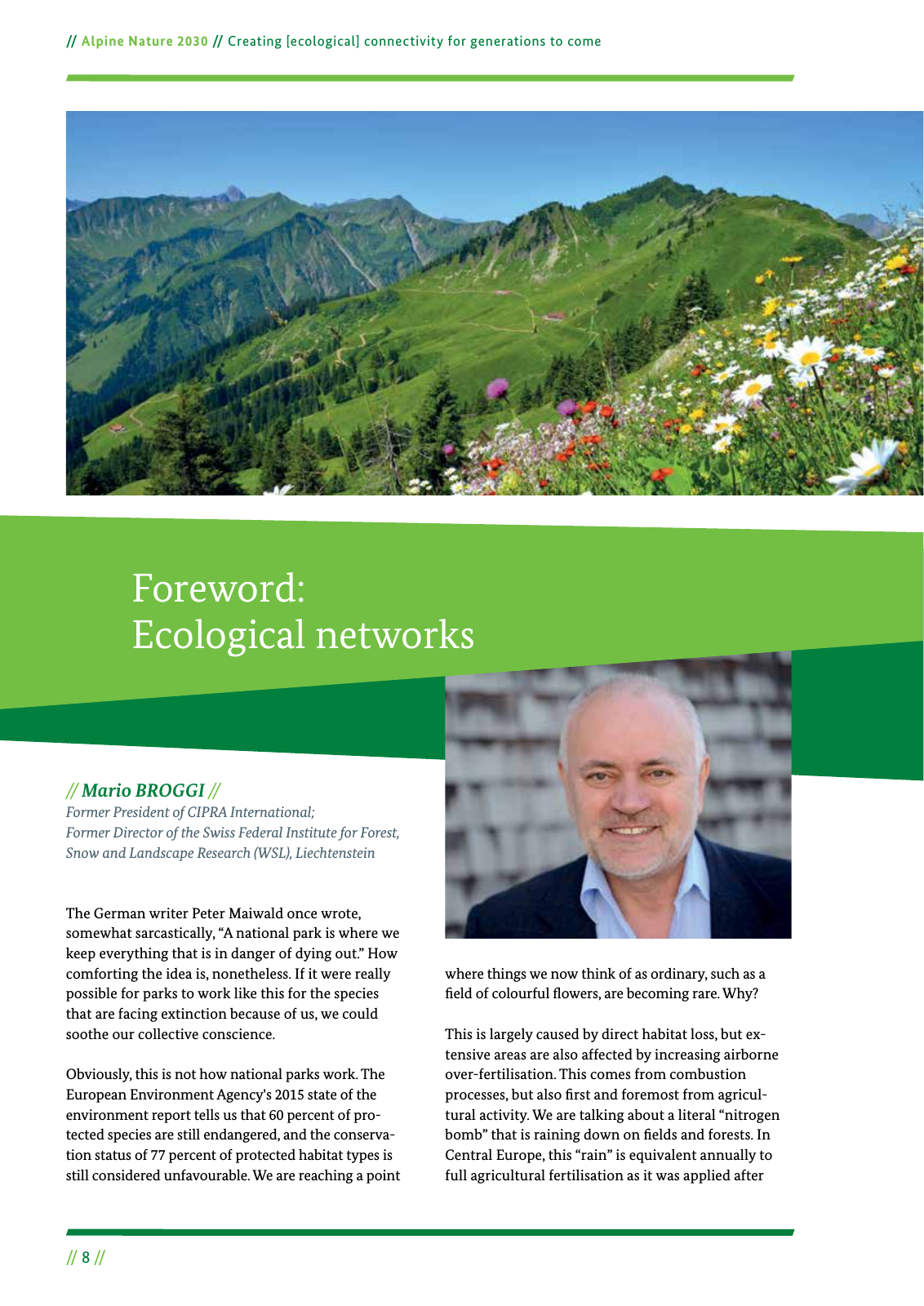The German writer Peter Maiwald once wrote somewhat sarcastically A national park is where we keep everything that is in danger of dying out How comforting the idea is nonetheless If it were really possible for parks to work like this for the species that are facing extinction because of us we could soothe our collective conscience Obviously this is not how national parks work The European Environment Agency s 2015 state of the environment report tells us that 60 percent of pro tected species are still endangered and the conserva tion status of 77 percent of protected habitat types is still considered unfavourable We are reaching a point where things we now think of as ordinary such as a eld of colourful owers are becoming rare Why This is largely caused by direct habitat loss but ex tensive areas are also affected by increasing airborne over fertilisation This comes from combustion processes but also rst and foremost from agricul tural activity We are talking about a literal nitrogen bomb that is raining down on elds and forests In Central Europe this rain is equivalent annually to full agricultural fertilisation as it was applied after 8 Alpine Nature 2030 Creating ecological connectivity for generations to come Former President of CIPRA International Former Director of the Swiss Federal Institute for Forest Snow and Landscape Research WSL Liechtenstein Mario BROGGI Foreword Ecological networks

Hinweis: Dies ist eine maschinenlesbare No-Flash Ansicht.
Klicken Sie hier um zur Online-Version zu gelangen.
Klicken Sie hier um zur Online-Version zu gelangen.